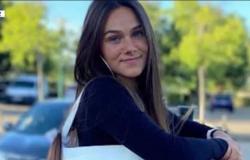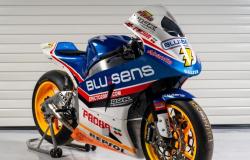
How to look at the images of the unspeakable and the work of the German painter? This is the question posed by this book which skilfully deconstructs the work of the German painter.
The Pierre Daix prize was awarded this year to Éric de Chassey, for his work Show. Images of Birkenau, from the Sonderkommando to Gerhard Richterpublished by Gallimard in May 2024.
Created by François Pinault in 2015, in homage to his writer and Art historian friend Pierre Daix, who died in 2014, the prize rewards, each year, a work devoted to the history of modern or contemporary art.
For the 2024 edition, the members of the jury salute the “remarkable investigation
by Éric de Chassey who brings to light a little-known part of the German painter's work Gerhard Richter» (born in 1932), in particular his cycle Birkenau (2014). « Through concise and analytical writing, Show. Images of Birkenau, from the Sonderkommando to Gerhard Richter stands out as an impactful work and encourages a demanding reading of the meaning of the images.
It reflects a committed model of the genre, like the convictions of Pierre Daix »underlines this prize which rewarded cutting-edge, even austere, often engaging books with high intellectual density.
The Pierre Daix prize has already been awarded to Paula Barreiro López in 2023 (Fellow fighters. Avant-garde and art critic in Spain during the Francoism, Éditions de la Maison des sciences de l'homme); has
Jérémie Koering in 2022 (The iconophages. A history of image ingestion Actes Sud, “Les Apparences” collection): to Germain Viatte in 2021 (The other side of the coinThe Contemporary Workshop; to Pascal Rousseau in 2020 (Hypnosis. Art and hypnotism from Messmer to the present dayENSBA-Museum of Fine Arts of Nantes); to Rémi Labrusse in 2019 (Prehistory. The other side of timeHazan, “Fine Arts” collection); to Pierre Wat in 2018 (Peregrinations. Landscapes between nature and historyHazan, “Fine Arts” collection); to Elisabeth Lebovici in 2017 (What AIDS did to me. Art and activism at the end of the 20th centuryJRP Ringier with La maison rouge — Fondation Antoine de Galbert2017) and by far the one that had the most resonance; to Maurice Fréruchet in 2016 (To erase. Paradox of an artistic gestureLes Presses du Réel); to Yve-Alain Bois (Ellsworth Kelly. Catalog raisonné of paintings and sculpture, 1940-1953, Volume 1 Cahiers d’art) and Marie-Anne Lescourret (Aby Warburg or the temptation of the lookHazan, “Fine Arts” collection) in 2015.
In 2014, the painter Gerhard Richter completed four abstract paintings which he called Birkenau. They are the result of his long confrontation with four photographs taken during the summer of 1944 near crematorium V of Auschwitz-Birkenau by members of the Sonderkommando assigned to the preparation of victims and the treatment of their corpses, which are the only images documenting directly the process of extermination of the Jews of Europe by gassing and destruction of their remains.
Éric de Chassey, born in 1965 in Pittsburgh (United States), is director of the National Institute of Art History (INHA) in Paris and professor of modern and contemporary art history at the School superior normal of Lyon. Between 2009 and 2015, he was director of the French Academy in Rome — Villa Medici.
« Since the 1960s, Gerhard Richter, who lived as a child under the Nazi regime and whose family was affected by it and by the war in various ways, has repeatedly tried to deal with the subject of extermination of the Jews, often implicitly and, frankly, obliquely, even if images relating to it appear in his Atlas, that is to say the collection of press images that he assembled over the years 1960. Some of his best-known grisaille portraits from the 1960s show, without unwary spectators being able to realize it, victims, executioners and passive actors of Nazism, to whom he is personally linked »explains this prolific author and exhibition curator still in action. He is the commissioner of “Parade, a French scene. Laurent Dumas Collection» which is currently being held at MO.CO in Montpellier until January 12.
« It was only at the beginning of the 2010s that he decided to specifically devote a set of paintings to the Shoah, based on four photographs taken by as many members of the Sonderkommando of Auschwitz-Birkenau — Alberto Errera, Alter Fajnzylberg, Abraham
and Shlomo Dragon —, which documents an operation to kill by gassing a convoy of deported Jews. After starting by taking up the iconography of these photographs, he decided to transform these paintings into abstractions. That's their title — Birkenau — which lets you know that they are dealing with this subject. It took him a lot of time and thought,
but I think that the admiration that his enterprise can arouse should not make us blind to certain aporias and contradictions of his approach »details this professor at heart.
« For the paintings, I deliberately chose not to ask questions directly to the artist, to the extent that I wanted to maintain a critical distance, which it seemed to me had generally been lacking in those who had written about these works. But over the years Richter provided photographic documentation on the different stages of his work, accompanied by comments: it was enough to resume this file with
method and precision. When I realized – although nothing indicated it and no one had noticed – that the photographic prints shown alongside the works had in fact been manipulated – and largely – by Richter, despite his declarations, I retraced what these manipulations had been, and what were the effects of these latter »explains the author. Gerhard Richter's paintings were notably shown in February 2020 at the Met Breuer in New York (with photos), and in 2026 at the Neue Nationalgalerie in Berlin in “Gerhard Richter: 100 Works for Berlin”.
« We live in an era where images circulate haphazardly, particularly on social networks, and this makes them instruments of propaganda or advertising, rather than liberating reflection and emotion. Images cannot be shown randomly; it is not enough to accompany them with comments, whatever form they take, so that they can be effectively seen, that is to say seen for what they are and what they show »he analyzes. “It is a rule that does not only apply to images that deal with violence, but to all images: they cannot be considered only from an aesthetic point of view, but necessarily by braiding this aesthetic point of view with an ethical point of view. This is what shocked me when I saw Richter's paintings accompanied by so-called documentation: the spectators simply did not see them, because everything tended towards the spectacular and not towards the complex capture of the images, which necessarily takes time.”





